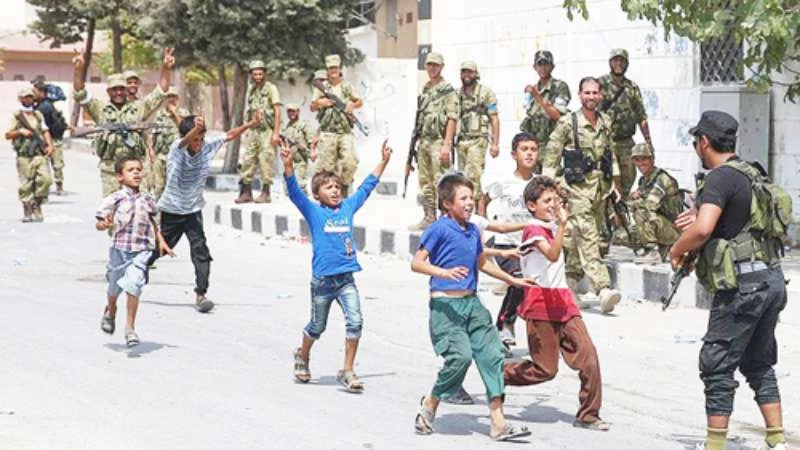Such developments are to constitute a new turn and to redraw the lines of interests and the common factors among the international powers: Washington and Moscow on the one hand, and Turkey and Iran on the other, and to relocate interactions among them after being confused for about a year. This, no doubt, adds more complications and dilemmas caused by the developments of the situation in Syria this time towards more interaction between the regional interests and more contradictions in a direct reflection of what is happening north of Syria starting from the battle of liberating Ain al-Arab (Kobani) to the time ISIS is expelled from Jarablus and in between liberating Manbij and occupying it by Syria Democratic Forces (SDF), to Hasakah events which showed a clear confusion between allied parties: Assad regime and its puppet, the PYD. These developments led to a Russian decision to hand in the city to Saleh Muslem’s militias in the context of the US-Russia crushing interests. In fact, there is an economic side of this conflict related to the PYD’s control over the economic resources including oil, of which Washington wants to be the acting controller.
If what is happening is a continuation of the developments and changes as well as occupations in the north of Syria since about 3 years, the results of the new coalitions were fast to appear via direct changes in the relations among the active powers in the region: Iran, Turkey and Russia in particular and this puts the US’ military presence and its main/temporal ally SDF in a rather critical situation; changes seem to be so imminent following Biden’s statements from Ankara that implied supporting the Turkish intervention in Jarablus and the necessity of the withdrawal of Saleh Muslem’s militias to the east of Euphrates in what can be called as shrinking.
The battle of Aleppo was not absent and the changes in politics and on the ground constitute one of its great influences. It is what pushed Iran and Moscow to open a new chapter in the Syrian issue with Turkey which is the biggest supporter of the Syrian opposition and the one that has been, in the last 5 years, most demanding of the necessity of Assad’s ousting in addition to its adoption of the Syrian opposition’s military option and its continuous efforts to establish a border buffer zone in which Assad regime’s military operations are banned. These moves were totally rejected by Washington in the first place with unconvincing justifications: the necessity of Ankara’s full involvement in the international coalition to fight ISIS. Washington’s stances, in addition to the support of Saleh Muslem’s militias, led to letdown in the strategic understandings that reached a critical situation with the indirect Turkish accusation of the White House of supporting the coup and of not responding to Erdogan’s requests to deliver Fethullah Gülen or deport him.
It is crystal clear that both Tehran and Moscow found shared lines with Ankara following their large strategic losses in Aleppo. In return, the continuation of the US support to SDF will cause two main issues: threatening the Turkish national security on the one hand and, on the other, the Kurdish expansion in the north of Syria will enforce the US presence in the region. From here we can understand the background dimensions of the military confrontations between the Assad regime and Muslem’s militias. Each party invests what it has to benefit from the understanding rapprochement period which may not last long.
Developments and challenges triggered the three capitals to arrive at a common understanding point: the Turkish approval of the conception of the political solution in Syria. It is based on activating Vienna outcomes, i.e., keeping Assad in power for a transitional period to be agreed on in return for a Turkish role in bridling SDF expansion and preventing them it from controlling more areas after being liberated from ISIS. The Turkish role in Jarablus battle can be understood according to such data.
The direct Turkish intervention on the ground reflects a growing anxiety caused by the White House policies which supported SDF and did not give the Free Syrian Army the requirements for its continuation whether in confronting the Assad regime or ISIS and these policies allowed Russia to do whatever it wants in Syria, supporting the perpetrators of the most hideous crimes against humanity. This interaction was very late and was supposed to be Saudi-Turkish, but Washington aborted it for the sake of supporting Saleh Muslem and for the sake of ISIS’ continuity to be a main factor for the ongoing troubles in the region and to keep it in the long struggle circle within combating terrorism strategy which did not lead to decisive results despite the presence of two coalitions led by Washington and Moscow.
Jarablus liberation battle is a direct, clear and transparent message to all parties of intervention and struggle in Syria. Even if, as mentioned above, the Turkish intervention came late, it was better than not. Syria has become a battle field for all parties and this should stop so that the Syrian revolution recovers its way towards salvation. It is a message that triggers us to confirm that ISIS is a card and the SDF is fuel whose use is no longer preferred in the coming phase. The changes are swift and the coalitions are achieving their ends quickly after Aleppo battle burned Moscow’s dress and the turban of al-Faqih in Tehran.
Liberating Jarablus poses an important inquiry about the battle of liberating Raqqa (from ISIS and SDF). Under the current changes, which parties will be participating and what will it lead to in the short run?



التعليقات (0)